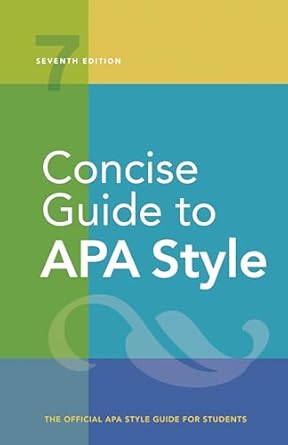[toc]
formatting length guide for academic papers
Concise Guide to APA Style: 7th Edition
Page 45 Review
Understanding Paragraph Formatting and Paper Length in Academic Writing
This ebook excerpt delves into the essential aspects of paragraph formatting and paper length guidelines crucial for academic writing.
Let’s explore the key takeaways:
Paragraph Indentation: Setting the Stage for Clarity
The text emphasizes the importance of consistent paragraph indentation, stating, “The default settings in most word-processing programs are acceptable.
The remaining lines of the paragraph should be left-aligned.” This highlights the standard practice of using default settings for indentation, ensuring a uniform and professional appearance.
However, it also outlines exceptions to this rule.
Exceptions to Indentation Rules
The excerpt meticulously details several exceptions where the standard indentation rule doesn’t apply, indicating a nuanced approach to formatting.
These exceptions include:
Title Page Elements: “On the title page, the title (in bold), byline, affiliations, course number and name, instructor, and assignment date should be centered.” This ensures prominence and visual hierarchy for essential information.
First Page Title: “At the top of the first page of text, the title (in bold) should be centered.” Similar to the title page, this maintains consistency and emphasizes the paper’s focus.
Section Labels: “Section labels, such as “Abstract” and “References,” should be centered (and in bold; see Section 1.27).” This helps readers quickly navigate the document’s structure.
Abstract First Line: “The first line of the abstract should be flush left (not indented; see Section 1.10).” This distinguishes the abstract from the main body text.
Block Quotations: “The entirety of a block quotation should be indented from the left margin 0.5 in.
If the block quotation spans more than one paragraph, the first line of the second and any subsequent paragraphs of the block quotation should be indented another 0.5 in. so that those first lines are indented a total of 1 in. (see Section 8.27).” This visually separates extended quotations from the author’s own words.
Headings: “Level 1 headings should be centered (and in bold), and Level 2 and 3 headings should be left-aligned (and in bold or bold italic, respectively; see Section 1.26).” This creates a clear hierarchy of information within the document.
Table and Figure Elements: “Table and figure numbers (in bold; see Section 7.10), titles (in italic; see Sections 7.11 and 7.25), and notes (see Sections 7.14 and 7.28) should be flush left.” This ensures consistent formatting for visual elements.
Reference List Entries: “Reference list entries should have a hanging indent of 0.5 in. (see Section 1.12).” This facilitates easy scanning of the reference list.
Appendix Elements: “Appendix labels and titles should be centered (and in bold; see Section 1.14).” This maintains consistency with other section titles.
Paper Length: Striking the Right Balance
The text also addresses the crucial aspect of paper length, stating, “The length for student papers is specified by the assignment guidelines.” Adhering to the assigned length is paramount.
It provides guidance on how to shorten a paper that exceeds the limit: “If a paper exceeds the target length, try shortening it by stating points clearly and directly, confining discussion to the specific problem under investigation, deleting or combining data displays, eliminating repetition across sections, and writing in the active voice.” This suggests strategies for conciseness and efficiency in writing.
Strategies for Concise Writing
The ebook offers practical tips for managing paper length, including:
Clarity and Directness: Stating points concisely avoids unnecessary verbiage.
Focused Discussion: Confining the discussion to the specific problem ensures relevance.
Data Display Optimization: Deleting or combining data displays reduces visual clutter.
Eliminating Repetition: Removing redundant information streamlines the text.
Active Voice: Writing in the active voice generally results in shorter, more impactful sentences.
Furthermore, it suggests more drastic measures if the paper remains too long: “If your paper is still too long, you may need to focus on a narrower topic or, if the instructor allows, divide the paper into two or more papers, each with a specific focus.” This highlights the importance of refining the scope and focus of the paper.
Conclusion
In conclusion, this excerpt provides valuable insights into paragraph formatting and paper length requirements in academic writing.
By understanding and applying these guidelines, students can produce well-structured, concise, and effective papers.
The emphasis on exceptions to the rule demonstrates the importance of careful attention to detail and adherence to specific formatting conventions.
Buy full ebook for only $18: https://www.lulu.com/shop/american-psychological-association/concise-guide-to-apa-style-7th-edition-official/ebook/product-rmzpq54.html?page=1&pageSize=4
Formatting Length Guide For Academic Papers
Read more: Bias-Free Language: APA Guidelines & Commentary</
Read more: Bias-Free Language: APA Guidelines & Commentary</


Leave a Reply